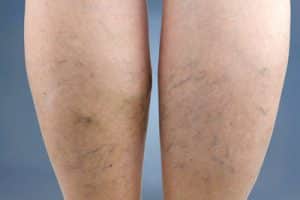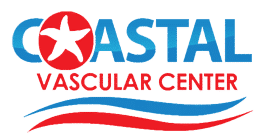What Are Spider Veins
 Roughly 25 million Americans suffer from spider veins. This number is likely low because many need to report them. By the time we reach our 60s, it is estimated that 72 percent of women and 42 percent of men will experience vein problems. Unlike Varicose Veins, spider veins are smaller, red, purple, and blue vessels that twist and turn. These veins are easily visible through the skin, as well. They are typically visible on the legs and face. If you suffer from spider veins, get an appointment with the Houston Spider Vein Treatment Center.
Roughly 25 million Americans suffer from spider veins. This number is likely low because many need to report them. By the time we reach our 60s, it is estimated that 72 percent of women and 42 percent of men will experience vein problems. Unlike Varicose Veins, spider veins are smaller, red, purple, and blue vessels that twist and turn. These veins are easily visible through the skin, as well. They are typically visible on the legs and face. If you suffer from spider veins, get an appointment with the Houston Spider Vein Treatment Center.
What Causes Spider Veins?
Approximately half of the population over 50 will develop some vein issues in their legs, and women are more commonly affected than men.
You may be at higher risk depending on several contributing factors, including:
- Gender
- Genetics/family history
- Prolonged sitting and standing
- Frequent heavy lifting
- Obesity and weight fluctuations
- Hormonal changes (pregnancy, menopause, and long-term use of birth control)
- Excessive sun exposure
- Lack of exercise
- Leg injuries
Warning Signs
Most recognize spider veins as the bulging, rope-like veins in the legs. However, vein problems may present themselves with other, more subtle signs and symptoms:
- Aching or burning sensation
- Itching around the bulging vein or in the ankle area
- Uncomfortable cramps in the legs
- Heavy, tired feeling in the legs by the end of the day
Symptoms usually are not present in the morning but increase as the day progresses. If left untreated, they can progress to skin changes. Recognizing the often subtle symptoms before skin changes and later progression to the ulcer (ulcer) is essential.
Spider veins are damaged veins. They develop when tiny, one-way valves inside the veins weaken. In healthy veins, these valves push blood in one direction, back to our heart. When these valves weaken, some blood flows backward and accumulates in the vein. Extra blood in the vein puts pressure on the walls of the vein.
With continual pressure, the vein walls weaken and bulge. In time, we see a varicose or spider vein.
Identifying when you have spider veins
You can know that you have varicose veins by looking at them. These veins protrude above the skin’s surface (though they are still covered by skin) and look like a tangle of rope. The area around the veins might also be swollen, or the veins may appear raised on their own.
These veins appear on the legs and can appear as low as the ankles and as high as the groin. However, they are usually found on the back of the calf or knee. They are next found most often on the inside of the thigh.
Sometimes, these veins are painful, and sometimes, they are just an aesthetic issue. For some people, varicose veins are painful enough to limit mobility or impact their quality of life. Some symptoms include restless legs, muscle cramps, itching skin, swollen ankles, a heavy feeling in the legs, and throbbing pain. Some people cannot walk when these symptoms present, while others can’t stand for long periods.
Spider Vein Treatment Options
Fortunately, there are many options to treat spider veins. Treatment options range from self-care to minor surgery.
You can make lifestyle changes to treat your veins. The following tips can help you improve blood flow.
- Exercise
- Elevate your legs
- Sit for long periods? Get up and walk around every 30 minutes
- Stand for long periods? Take a break every 30 minutes
- Avoid soaking in hot baths for long periods
Compression stockings are also a possibility. These compression stockings apply steady pressure to help move the blood back to your heart. The constant pressure also lessens swelling in your legs, reduces the risk of getting a blood clot, and increases blood flow. However, the veins in your legs will still be visible.
Milder cases can be treated non-surgically. For example, sclerotherapy can seal the veins with a chemical solution, and laser therapy can fade spider veins. With this procedure, you will be in and out of the office on the same day. However, you must take daily walks and wear compression socks for a few days.
Spider Vein Surgical Options
Surgical options are available for more severe cases of bulging veins and those that cause serious pain and swelling. For example, a catheter can be inserted into the vein to heat and seal it with Radio Frequency Ablation (RF) technology. Since the RF technology uses a low temperature, it does not damage the surrounding tissue. Therefore, patients do not have as much pain or bruising as with other treatments.
In Radio Frequency Ablation treatments, typically, the following happens:
- You receive local anesthesia, which numbs the area.
- Your doctor then makes a small incision and inserts a laser fiber (for EVLT) or catheter (for RFA) into the vein.
- The laser or radiofrequency device heats the vein, causing it to collapse and seal shut.
- After treatment, a compression stocking is needed on each leg.
To help prevent possible side effects, you will need to take daily walks and wear compression stockings for a few days. - You can return to work and most activities the next day.
Contact Coastal Vascular Center
At the Coastal Vascular Center, we understand that spider veins are not solely a cosmetic concern but can significantly impact your quality of life and overall health. With the latest treatments, ranging from lifestyle changes and compression therapy to advanced surgical options, we are dedicated to providing personalized care tailored to your unique needs.
Don’t let spider veins hold you back any longer. Prompt treatment prevents potential complications. Trust your care to our highly skilled team, led by Dr. Divyang C. Ayar, renowned for his expertise and commitment to patient well-being.
Take the first step towards relief and rejuvenation by scheduling your appointment with Dr. Ayar today. Call us at 713-999-6056 to explore your spider vein treatment options and embark on your journey towards healthier, more comfortable legs. Don’t wait, contact us now and regain the confidence to show off your legs again!
